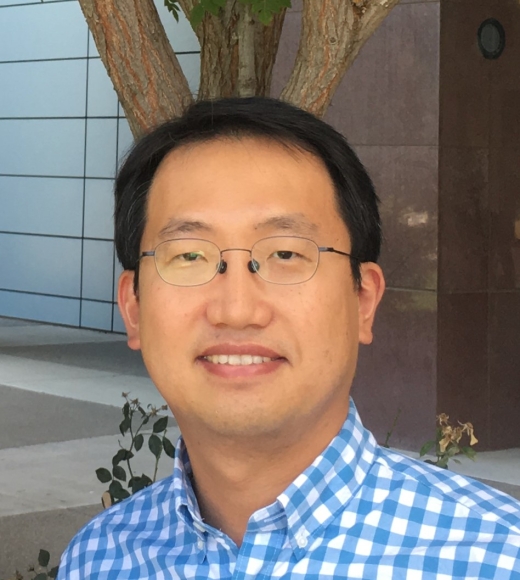Associate Professional Researcher Sun Il Kwon Receives Exclusive Honor for dPEI Research

Sun Il Kwon, an associate professional researcher in the Department of Biomedical Engineering's Cherry Lab, has received the Hiruma/Wagner Award from the Japanese Research Foundation for Opto-Science and Technology.
The award celebrates early career researchers who provide outstanding presentations at the Peace Through Mind/Brain Science conference — an event that is invite-only.
"It's an honor just to be invited to speak at the conference, and then to receive the award on top of that is extra special," said Simon Cherry, a Distinguished Professor of biomedical engineering at the University of California, Davis.
The foundation held the first conference in 1988 based on the idea that greater world peace might come through a deeper understanding of the human mind and brain chemistry. Since 1989, the biannual event has welcomed scientists from across the globe to give presentations on how photonics, or the study of light, might be applied to solving human problems.
At the event, Kwon presented his team's recent study on a new imaging technique they dubbed direct positron emission imaging, or dPEI, in 2021. The theoretical technique has the potential to provide much higher quality scans of the human body with faster image production rates or lower radiation doses — or both simultaneously — than positron emission tomography, or PET, the current standard for clinical scanners.
The novel imaging technique may also change the shape of the scanning field. Due to its ability to offer a full image of three-dimensional models without the large space requirements and geometrical constraints of PET, dPEI creates the opportunity for much smaller and simpler scanner designs, such as those specialized for certain organs like the brain.
"These small scanners could be used in small clinics as it does not require a lot of space," Kwon said. "This would allow the opportunity for more frequent routine scans for cancer or chronic diseases."
During the presentation, Kwon also discussed his progress on an ongoing research project funded by the National Institute of Biomedical Imaging and Bioengineering, or NIBIB. Through the project, he hopes to make dPEI a reality.
"Reconstruction-free positron emission imaging has been one of the holy grails in the nuclear medical imaging field since the early 1980s," he said. "This project will be the first stepping stone toward building clinical dPEI scanners."
The presentation also holds historical significance for the conference, as its first two events discussed the then-new PET imaging technique — an advancement that Henry N. Wagner, a pioneer in nuclear medicine, said it made possible to draw connections between emotions and chemical reactions in the brain for the first time in 1989.
Wagner's name makes up half of the award Kwon received; the other half honors Teruo and Akira Hiruma, former presidents of Hamamatsu Photonics, a leading company for light technology and optical products.
"I was tremendously pleased to be selected to receive the Hiruma/Wagner award," Kwon said. "The biggest honors go to the collaborative dPEI team from the UC Davis and Hamamatsu Photonics [who worked with me], since it would not happen without contributions and help from every team member."




